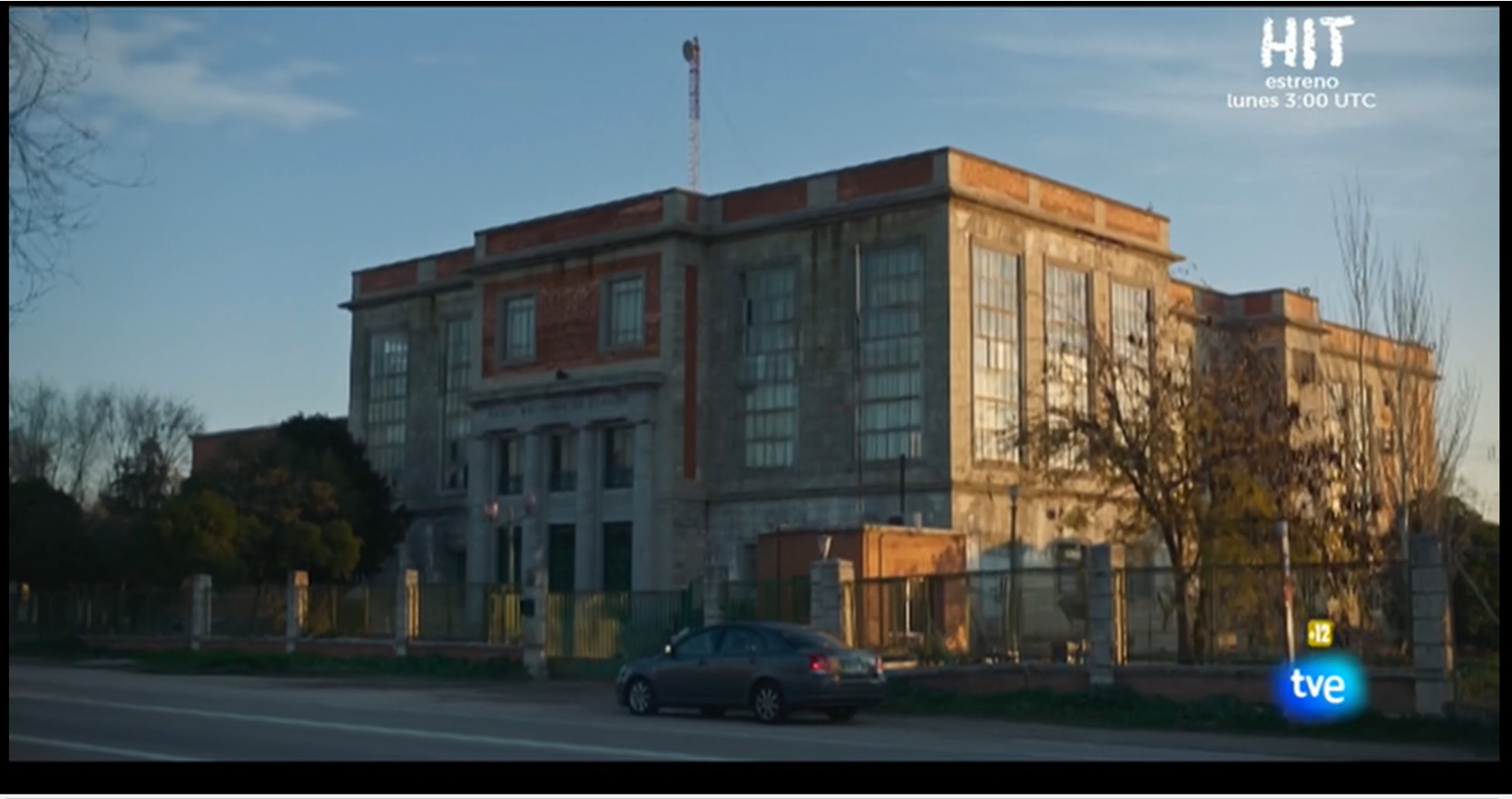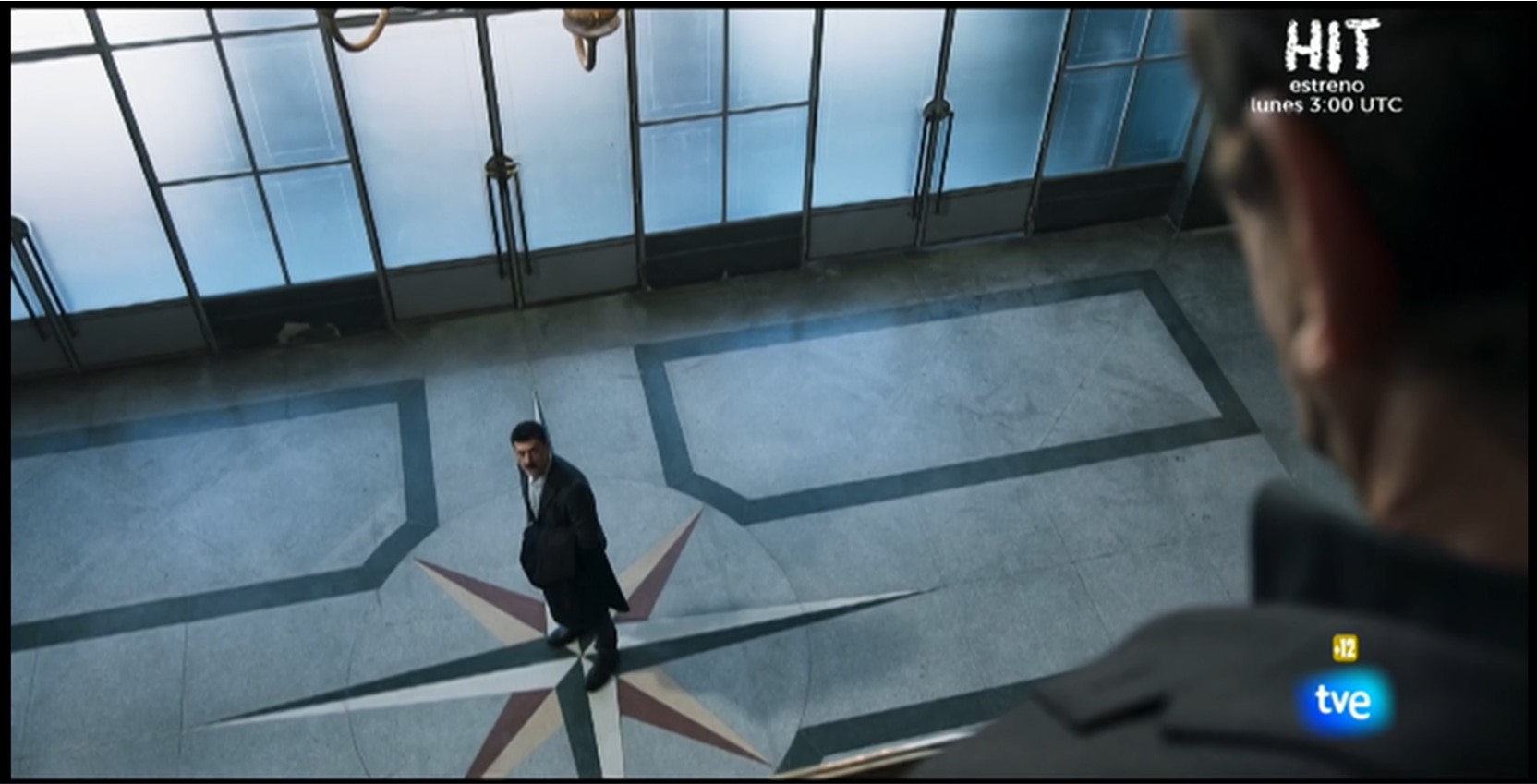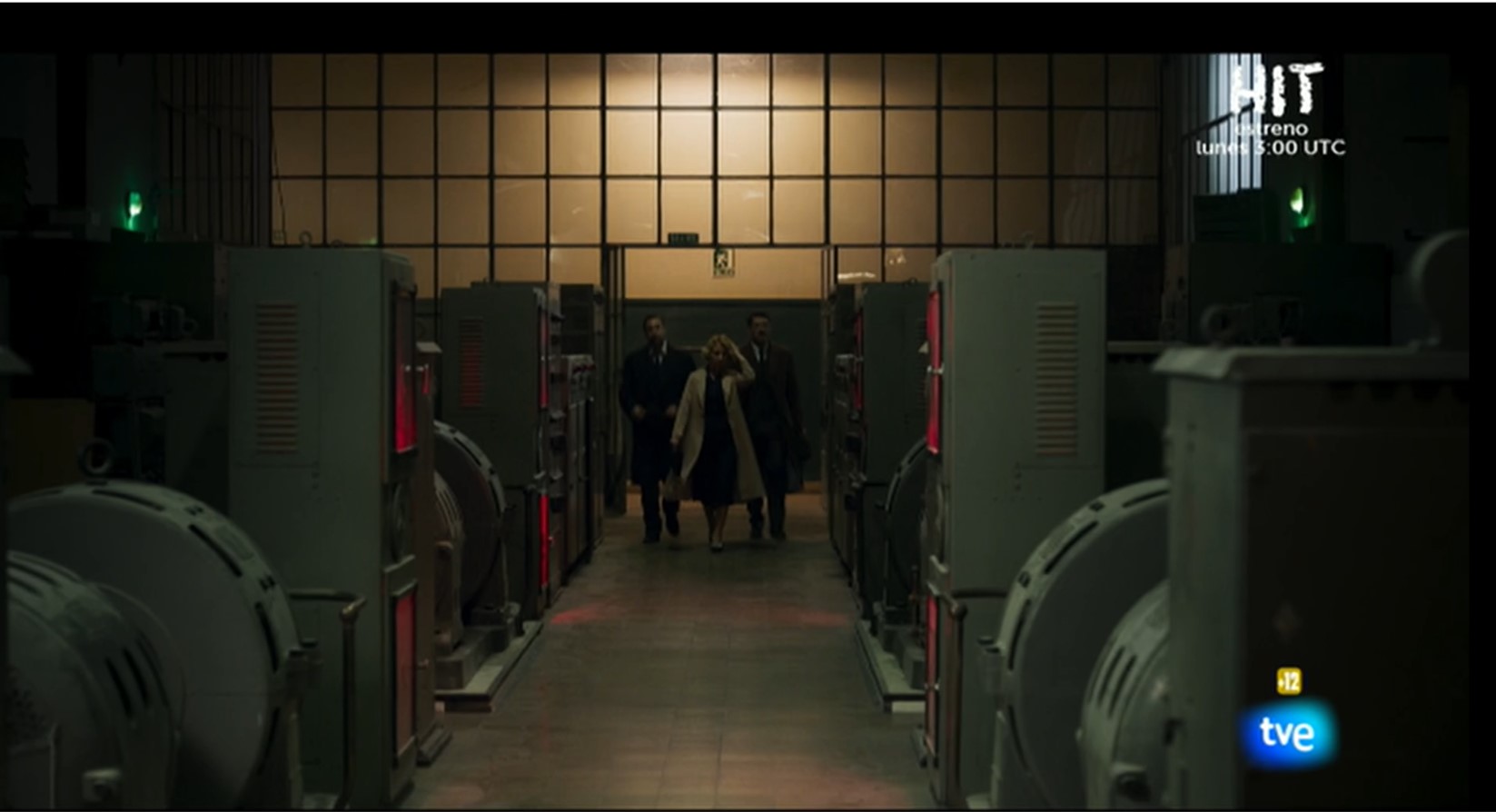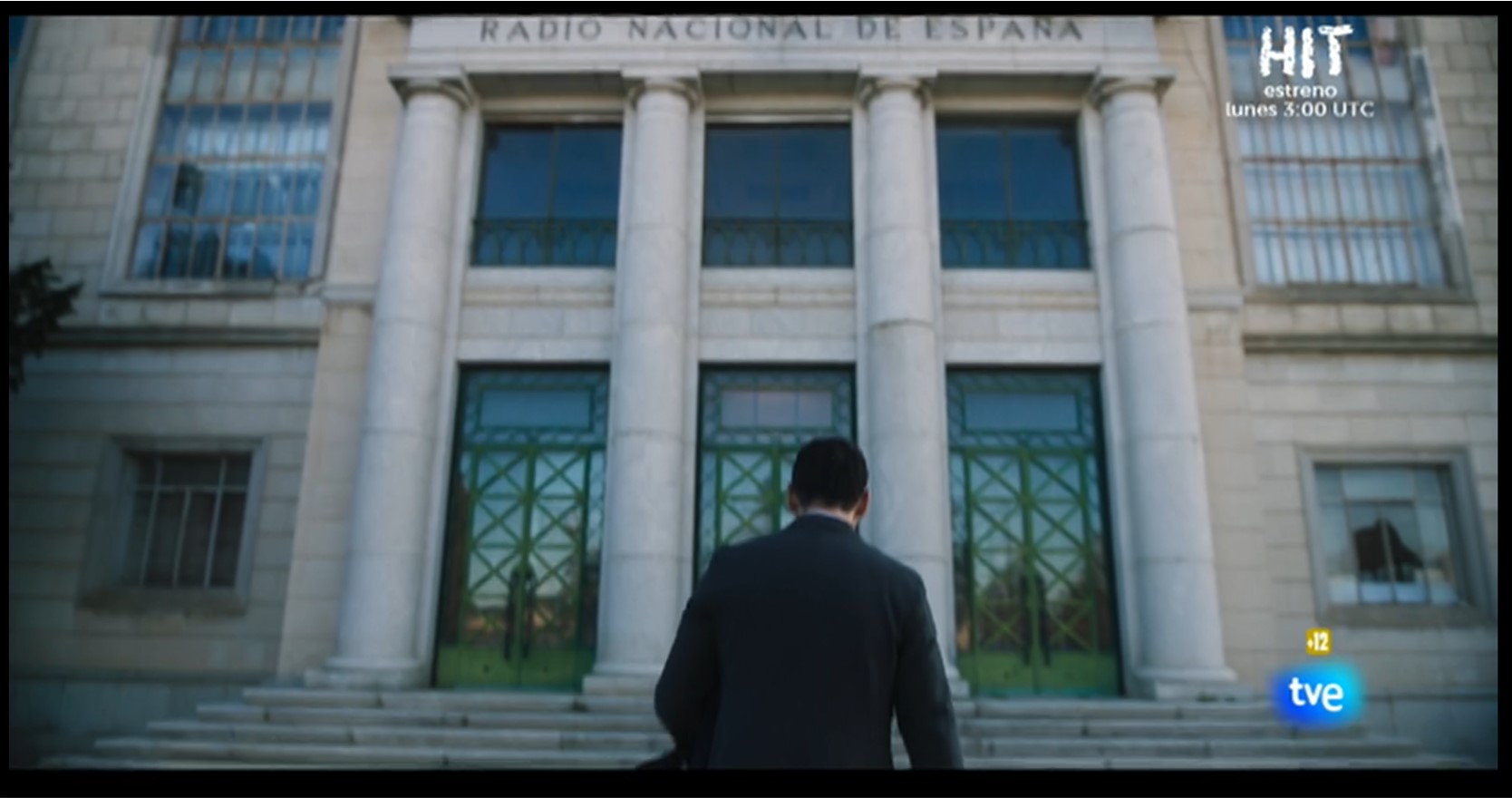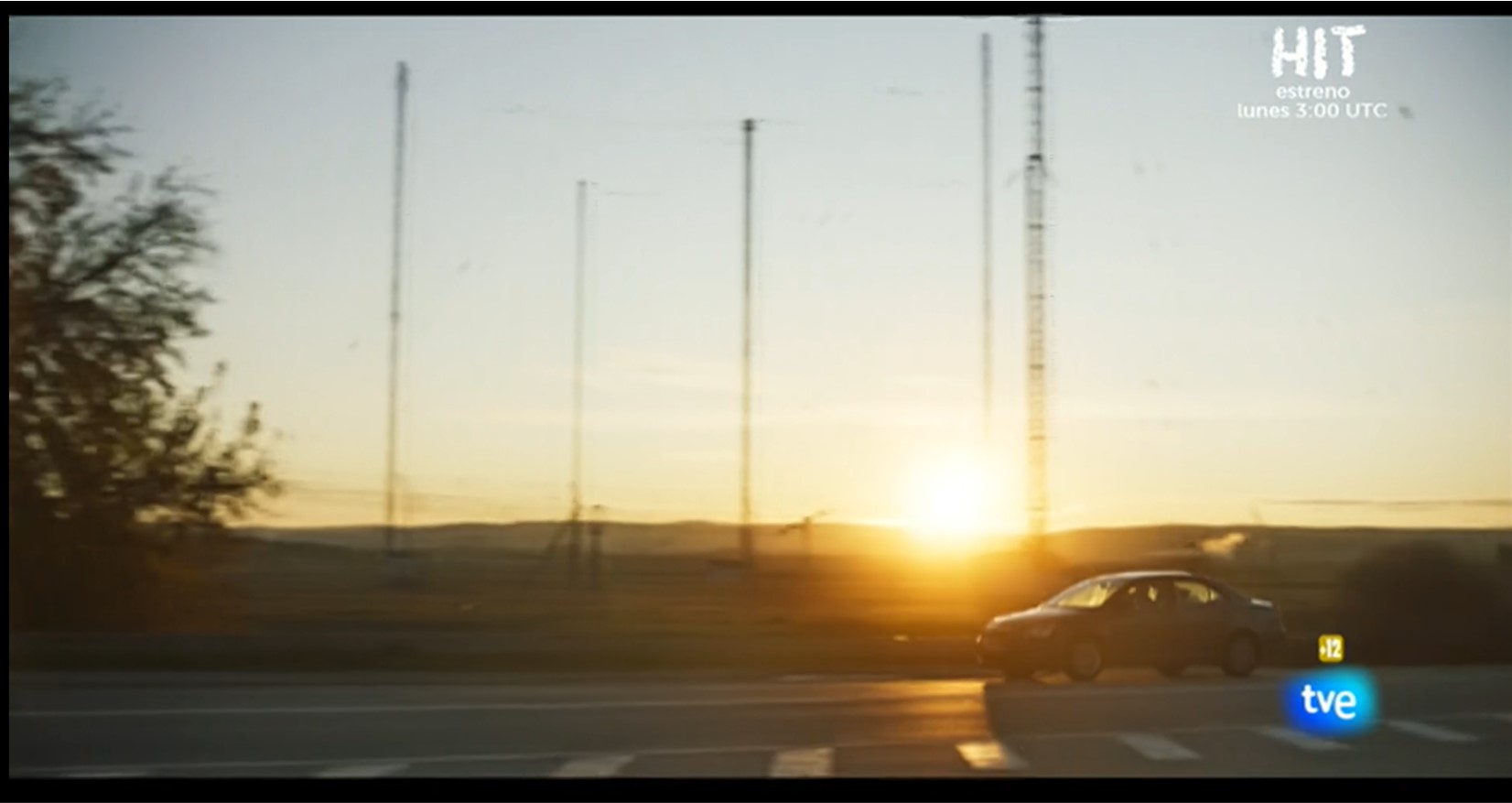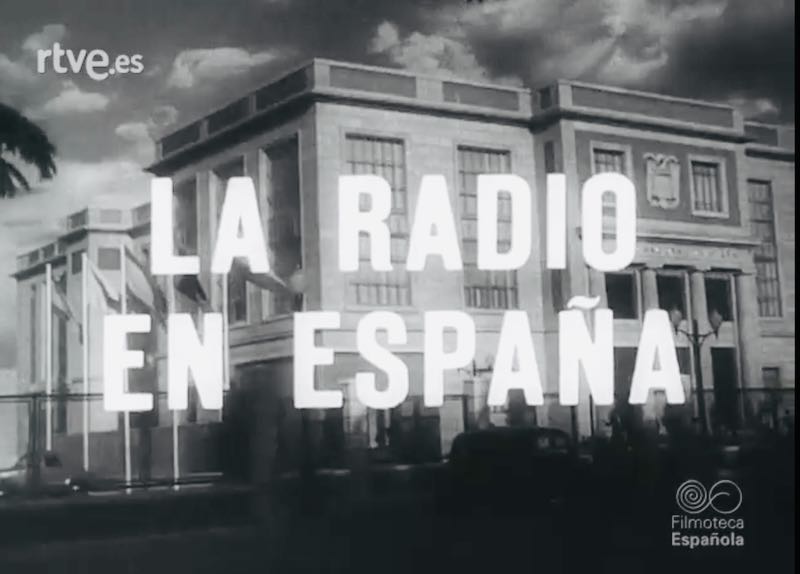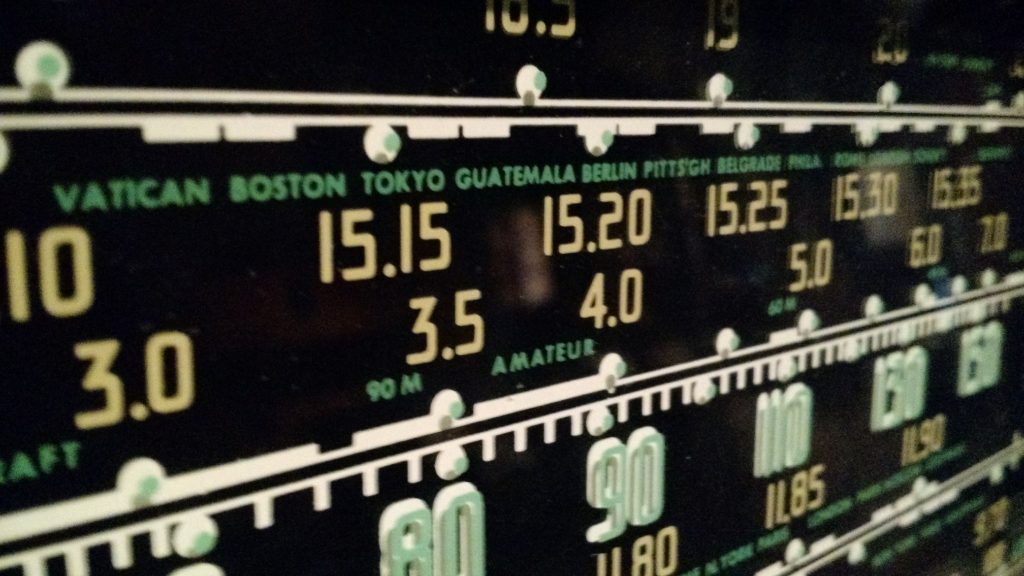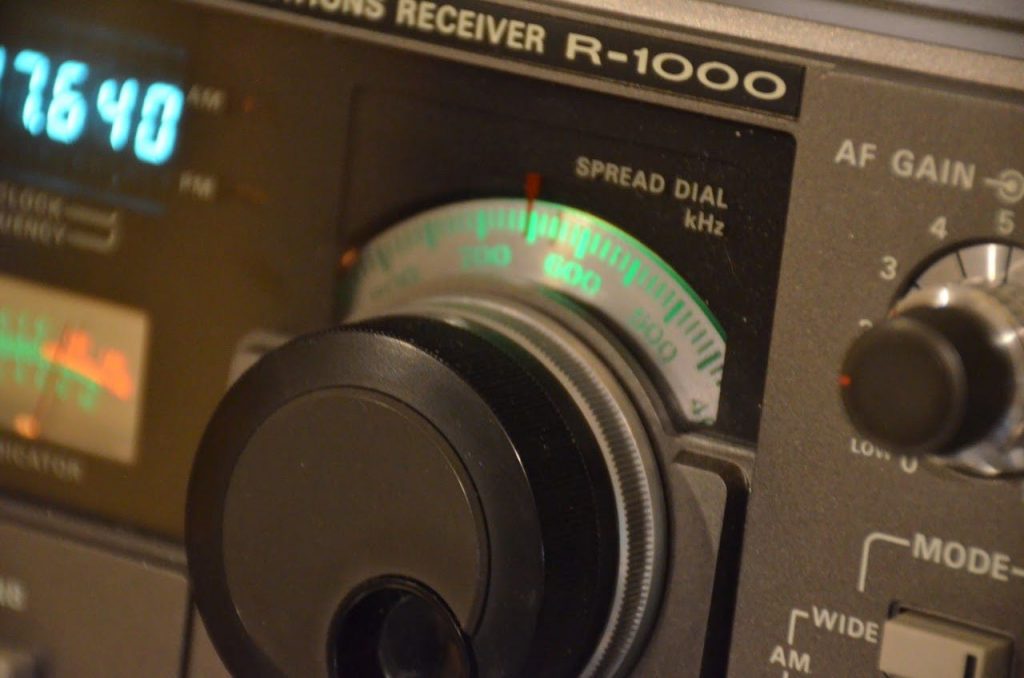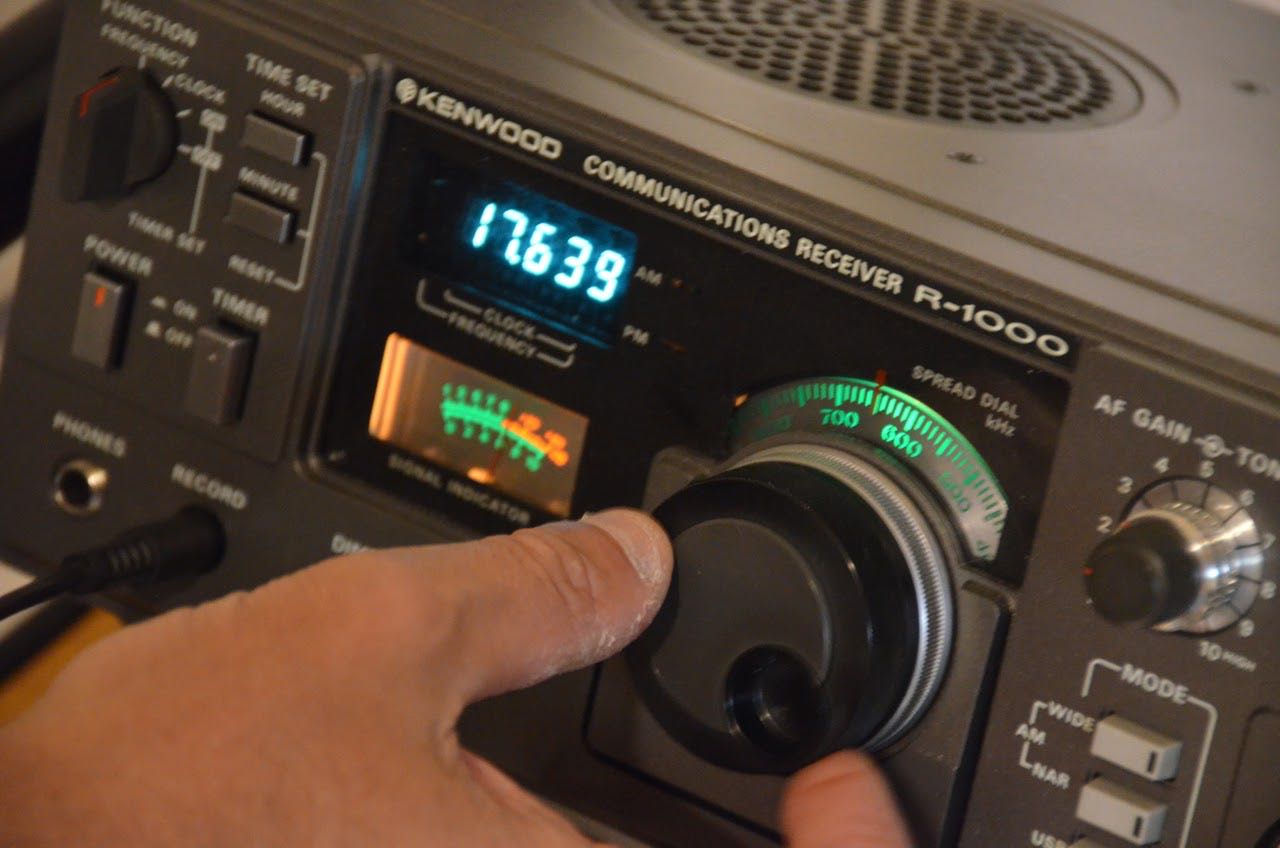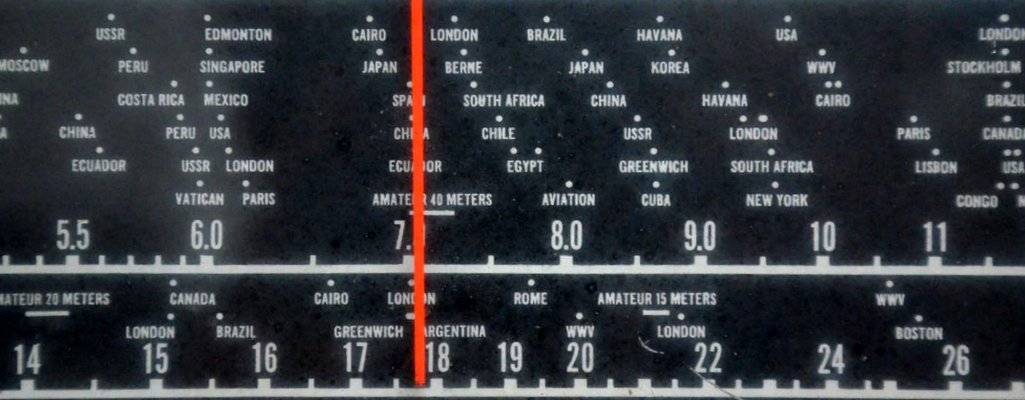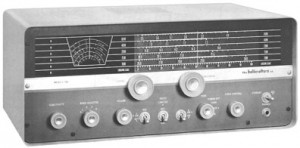Many thanks to SWLing Post contributor, Tracy Wood (K7OU), who shares the following guest post:
SWLing.com now takes “Spot the shortwave radio set in the movie or show” to new heights –
“Spot the shortwave radio station in the TV series”
The former Radio Exterior de España (REE) shortwave transmitter site at Arganda del Rey forms the backdrop for the fourth season of the hit Spanish TV series “El Ministerio del Tiempo” (the Ministry of Time). The show’s premise – unlike today’s superpowers with their high-tech kinetic weaponry, Spain’s 21st century advantage lies in the nation’s time-traveling skills.
The show’s producers tip their hat to the “Centro Emisor de Onda Corta” facility as the Ministry of Time’s “headquarters” relocates this season to this historic broadcast complex. The large engineering library, old shortwave transmitters, electric rectification hardware and even antenna field form a ready-made stage.
Up into the early 1990’s Arganda del Rey served as a shortwave and medium wave site. When all the shortwave services finally migrated over to Noblejas (40 km SE) the Arganda del Rey center continued as the long-standing medium wave location for Radio Nacional de España’s Radio 1 (585 kHz 600kw) and Radio 5 (657 kHz 50kw). Arganda is now completely inactive with the last transmissions being DRM tests on 1359 kHz with 10 kilowatts. The facility was replaced by Madrid’s Majadahonda site.
Ministerio de Tiempo viewers first get a hint of the radio connection as the character “Alonso de Entrerríos“ (played by José Ignacio “Nacho” Fresneda García) drives towards the new headquarters. In the background we see the old Radio 5 antenna array. As the character Alonso approaches the building he looks up and sees the historic “Radio Nacional de España” lettering above the building entrance thus confirming the “Headquarters” original purpose.
A DXer might mistake the Radio 5 array for a shortwave NVIS antenna but instead it is a rare medium-wave cross-dipole arrangement; it was also this antenna that RTVE used for the DRM tests. The only remaining shortwave antennae at Arganda del Rey are some abandoned log-periodics which support a growing stork colony.
Satellite TVRO hobbyists also may recognize the “Arganda del Rey” municipality. HISPASAT has established its main uplink facility in a nearby industrial park in this same Madrid suburb.
Many thanks to DXer Pedro Sedano, General Coordinator of the Asociación Española de Radioescuchas (aer.org.es), for confirming the complete abandonment of Arganda del Rey from an RF-perspective. Also contributing is Ulis Fleming, K3LU, who several months earlier identified a NO-DO newsreel that helped tie the pieces together.
Links
An English-language description of the facility is here:
https://www.esmadrid.com/en/tourist-information/centro-emisor-onda-corta-rne-arganda-rey
“ Located on the Chinchón road, alongside the Arganda Bridge, this former Radio Nacional de España building, opened in 1954, is today popular for being the new headquarters of The Ministry of Time in its fourth season, the successful TVE series, as well as having appeared in other productions, such as a post office in Velvet Collection (Movistar +), and as the Medical Research Centre in La Valla (Antena 3).”
“The building, now abandoned, forms part of a set of buildings located on both sides of the road in which RNE had the headquarters of the medium and short-wave radio stations, houses and warehouses, whereby the most representative is this monumental property that was home to the short-wave radio station. “
“The building was designed by the architect, Diego Méndez, following the guidelines of classic architecture from the Franco era. Inside, the entrance hall stands out, a square room decorated with polychromatic marbles, presided by an impressive staircase with two flights of stairs, which is also in marble. On the first floor, there is all of the machinery for generating the necessary voltage and current for the short-wave transmitters, and the third floor has a library with important telecommunications books and articles.”
LAT-LON: 40°18’47.09″N 3°30’34.95″W
Show Wikipedia URL (in English):
https://en.wikipedia.org/wiki/El_ministerio_del_tiempo
Additional URLs (all in Spanish)
- Series Website: https://www.rtve.es/television/ministerio-del-tiempo/
- A “NO-DO” newsreel showing the 1954 inauguration of two 100-kw shortwave transmitters and the building interior in context. https://www.rtve.es/filmoteca/no-do/not-604/1481595/
- Site overview with links to a four-part video tour. https://historiatelefonia.com/2019/07/12/centro-emisor-de-onda-corta-radio-nacional-de-espana-en-arganda-del-rey/
- RTVE publicity photos showing building and interior set (with shortwave transmitter in background) https://www.panoramaaudiovisual.com/wp-content/uploads/2020/04/MdT_EdificioRNE_DavidHerranz.jpg https://www.panoramaaudiovisual.com/wp-content/uploads/2020/04/MdT_RNE-archivo1_DavidHerranz.jpg
- RTVE press release about the Centro Emisor https://www.rtve.es/rtve/20200401/ministerio-del-tiempo-rueda-integramente-escenarios-naturales-su-cuarta-temporada/2010843.shtml
- Site Description (Historic) with Interior/Exterior Views http://archivo.ayto-arganda.es/patrimonio/fp.aspx?id=23
http://archivo.ayto-arganda.es/patrimonio/BusquedaPatrimonio.aspx?id=23#
— Tracy Wood (K7OU)
Thank you so much, Tracy, for putting this post together!
Now I wish my Spanish comprehension was better as I’d love to watch this show–sounds like a fascinating story line! And the transmitter site is pure radio eye candy! Brilliant!

